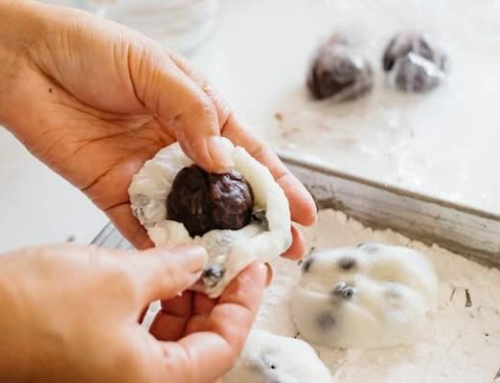Mochi Daifuku, air-like mochi encasing a delicious filling, is Japan’s delectable, timeless classic dessert that has conquered the globe. Traditionally laboriously hand-made from freshly pounded glutinous rice, producers are now eyeing mechanization to mass-produce en masse without loss of quality. Mochi Daifuku machine is the key to such technology, enabling repetitive mass production on a large scale without loss of softness and flavor of hand-made mochi. If you’re considering introducing or upgrading mochi production, understanding these machines and their capabilities is essential.
1. What Is a Mochi Daifuku Machine?
A mochi daifuku machine actually mechanizes finicky wrapping of soft fillings like red bean paste, fruit jam, or sweet potato puree in soft sticky mochi dough. Unlike frozen-center mochi ice cream machines with cold-chain control, Daifuku machines are for room-temperature or refrigerated fillings, which will be kept soft at room or refrigerated temperatures.
The benefit of this equipment is that it is able to process mochi dough with stickiness and cleanliness to achieve the best results. The natural stickiness and elasticity of mochi dough render it difficult to process manually on a day-to-day basis, especially by volume. Modern equipment overcomes all these issues, with professionally designed extrusion systems and anti-stick, where production lines have the ability to produce thousands of identical items in one hour. Mid-ranges produce 1,500 to 3,000 identical pieces in an hour, with identical appearance, weight, and size, which quality control and retail require.
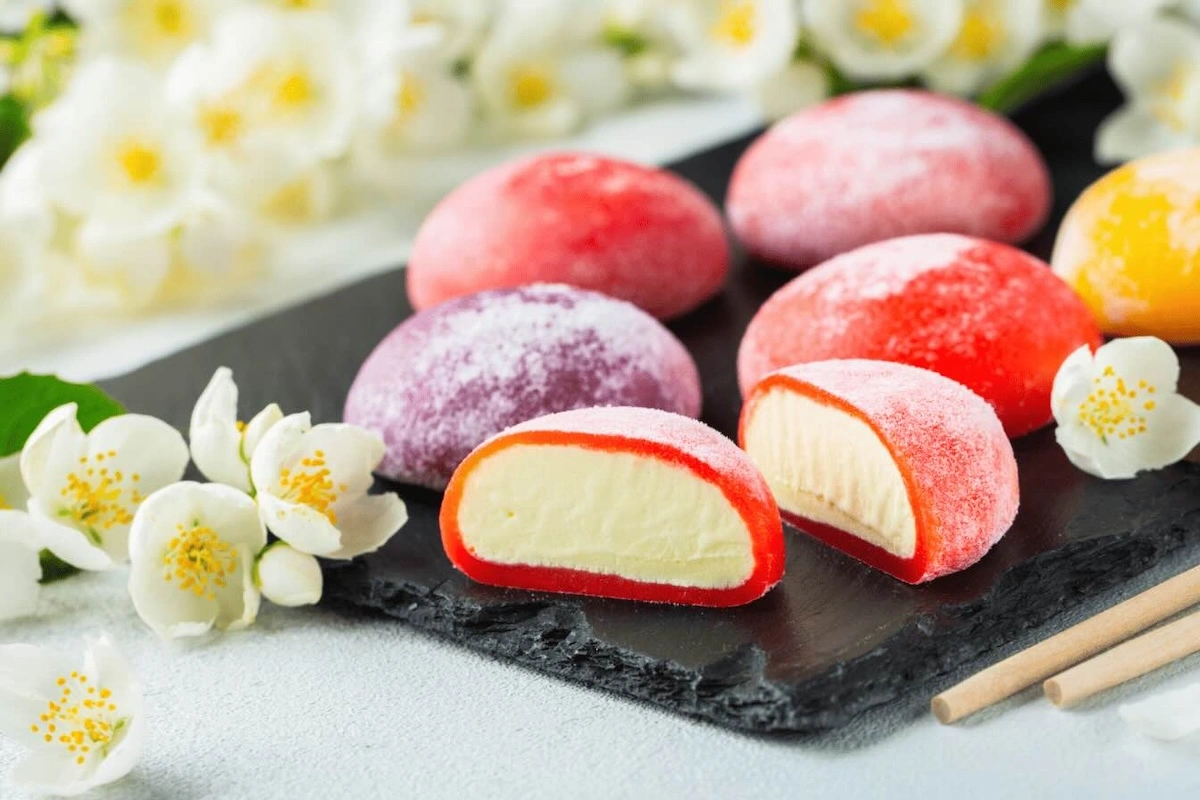
2. Features of Mochi Daifuku Machine
Mochi Daifuku machines may be advanced, but their excellence lies in the fact that they encapsulate a variety of vital systems in perfect balance. These are the vital features that make them capable of sustaining product quality, production efficiency, and process cleanliness—hallmarks of success for successful mass production of this delicate Japanese dessert. The most critical elements and functions that make up an extraordinary Daifuku machine are the following:
1) Dual-Feed Extrusion System
This is the core component of all Mochi Daifuku machines. It enables both filling and mochi dough extrusion simultaneously, so the center is evenly spread and aligned. Synchronization of outer dough flow and inner filling flow at an appropriate level of precision prevents defects such as tearing, hollow centers, or irregular coating. Advanced machines offer:
- Electronic control of the filling-to-mochi ratio
- Dough or filling viscosities, variable settings
- Equal flow irrespective of coarse or chunky materials (e.g., fruit pieces)
The extrusion ratio range enables companies to launch multiple product variations smoothly without equipment modifications.
2) Forming and Shaping Unit
After extrusion, the equipment itself forms each piece of mochi into a uniform shape, generally round or oval. Good-quality equipment features:
- Silicone or food-grade non-stick molds for gentle handling
- Pneumatic or servo-controlled forming to prevent crushing
- Adoption of quick-change mold attachments to produce different shapes and festive specialties
For premium brands, the forming unit can also emboss logos or patterns, adding marketing value directly onto the mochi surface.
3) Accurate Portion Control Mechanism
Precise portioning ensures product uniformity and minimizes wastage of material. Depending on the model, this is achieved by:
- Servo-driven cutting units or rotary cutters
- Real-time weight monitoring and feedback adjustment
- Programmable size settings for standard, mini, or XL Daifuku products
This not only helps with compliance for weighing labeling regulations, but also lower ingredient costs.
4) Advanced Anti-Stick Technology
Glutinous rice dough is the perfect challenge to work with: it sticks. High-quality machines use anti-stick technology like:
- Chilled rollers or forming drums
- PTFE-coated contact surfaces
- Automatic rice flour or cornstarch dusting modules
These attributes reduce downtime due to jamming of dough or machine cleaning and enhance product hygiene and appearance.
5) Easy Operation & Smart Control Panel
Latest Mochi Daifuku machines incorporate easy-to-use interfaces, and their operation has been simplified. The benefits are:
- Touchscreen HMI with multilingual display
- Recipe memory for rapid product changeover
- Real-time alerts for temperature, pressure, or material flow issues
This facilitates easy training and enables semi-skilled or rotating staff to use the machine efficiently.
6) Sanitary and Easy-to-Clean Design
Cleanliness is top priority in food manufacturing. Well-designed machines have:
- Stainless steel construction (typically SUS304 or SUS316)
- Tool-less daily cleaning
- CIP (Clean-in-Place) in some superior designs
- FDA-sanctioned parts and sanitary seals
An antigen-based design not only assures food safety but also meets HACCP or export-market approval.
7) Modular Configuration and Upgrade Options
As business picks up through more production demand, modular machine design allows factories to upgrade rather than replace whole systems. Common upgrades are:
- Automatic tray loading or pick-and-place robots
- Adding to packaging lines
- Multi-row extrusion heads for higher throughput
This expandability allows the same base machine to grow with the business.
8) Why are these features important?
A machine with these valuable features is an investment that means:
- Less product waste and better quality
- Less waste of ingredients and better cost control
- Simplified compliance with food safety standards
- Possible for quick response to the market with seasonal or high-quality lines
- Simpler operation for operators and cleaning staff
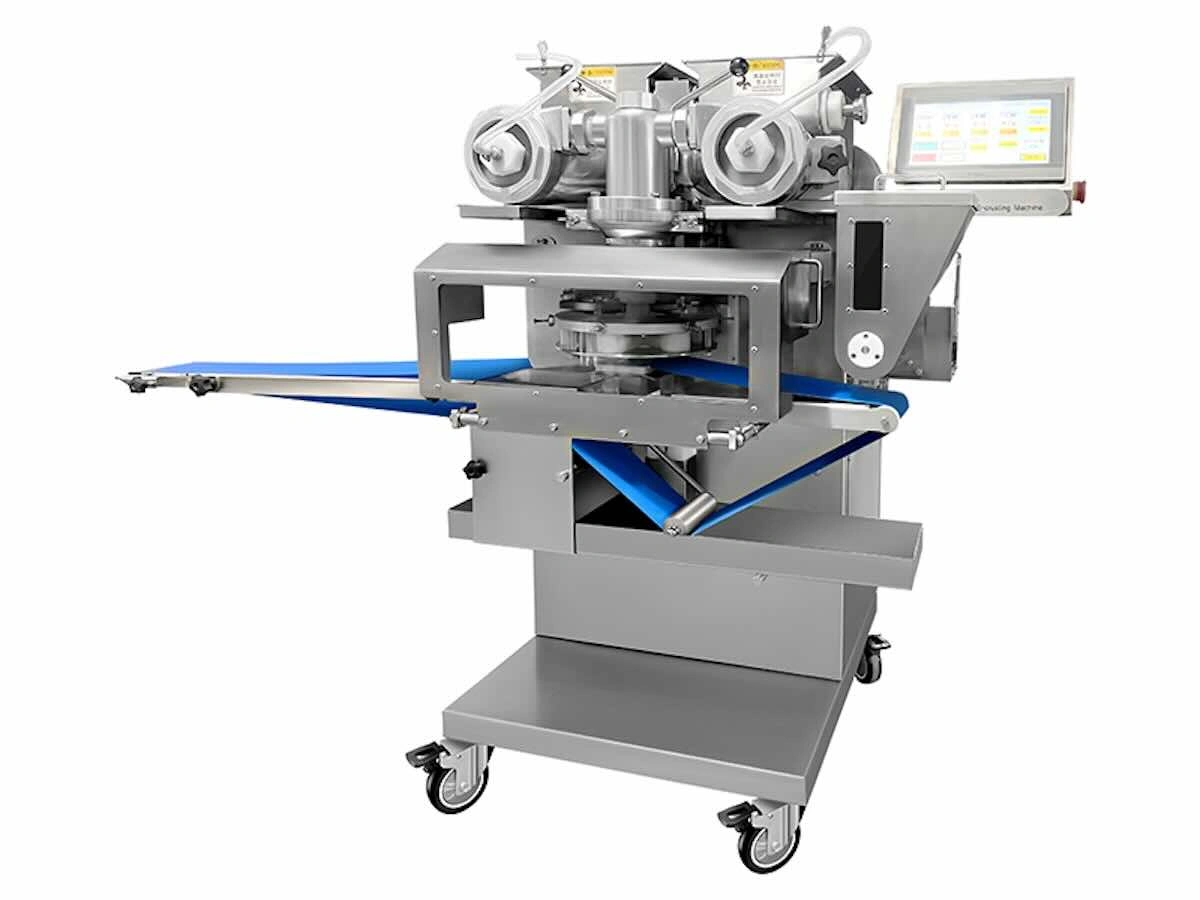
3. Applications of Mochi Daifuku Machine
Mochi Daifuku machines are no longer solely the prerogative of big factories anymore—they’re now widely used in all levels of production and food business models. Whether you have a new startup producing artisan sweets or an old factory with global exports, these machines offer excellent versatility and consistency of output. The following are some significant application scenarios and product possibilities:
1) Retail & Chilled Dessert Brands
Pre-packaged Daifuku manufacturers for supplying chain stores, convenience stores, or dessert chains use these machines to achieve:
- High-speed production of refrigerated or chilled Daifuku
- Extended shelf life by equal portioning and sealing
- Consistent appearance for retail brand identity and customer trust
This application is most suitable for companies supplying chain stores or breaking into the frozen/chilled food industry.
2) Central Kitchens and Cloud Bakeries
Mochi machines find widespread application in central kitchens and commissaries to serve fresh Daifuku on a daily basis to:
- Cafes and dessert shops
- Bubble tea chains
- Event caterers
In these operations, the focus is on small batch daily production with a restricted labor pool. The machines accommodate rapid flavor changeover and sanitizing, their cost justified by their worth in dynamic menus or high volume.
3) Export-Oriented Factories
Export factories manufacturing mochi for export markets rely on these machines for:
- Consistent quality in bulk
- Product differentiation by the flavor of a targeted market (for example, matcha for America, mango for Southeast Asia)
- Packaging line integration for food safety and automation compliance
Compliance with food regulations (FDA, CE, etc.) is typically obtained by machine designs providing high hygiene standards and traceability.
4) Trendy Product Types Produced with Mochi Daifuku Machines
The equipment accommodates a range of mochi products, including changing the shapes of molds, fillings, and dough types. Representative product forms are:
- Fruit Daifuku: Fresh or jam-like fruit fillings such as strawberry, mango, or blueberry.
- Taro & Sweet Potato Daifuku: Well-liked for their earthy, natural flavor and vibrant color, typically used for Southeast Asian or fusion-inspired desserts.
- Chocolate or Cream-Filled Daifuku: Global or young consumers’ fusion versions, using custard, chocolate ganache, or matcha whipped cream flavors.
- Holiday or Specialty Daifuku: Seasonal shapes (heart-shaped, flower-shaped) or holiday seasonal flavors for Valentine’s Day, Lunar New Year, or regional holidays.
5) Scalability for Different Business Models
| Production Scale | Suggested Machine Type | Output Capacity |
|---|---|---|
| Home-based/startup | Tabletop mini machine | 300–800 pcs/hour |
| Small café or cloud shop | Mid-size multifunctional unit | 1,000–2,500 pcs/hour |
| Central kitchen/factory | Industrial continuous production line | 3,000–10,000+ pcs/hour |
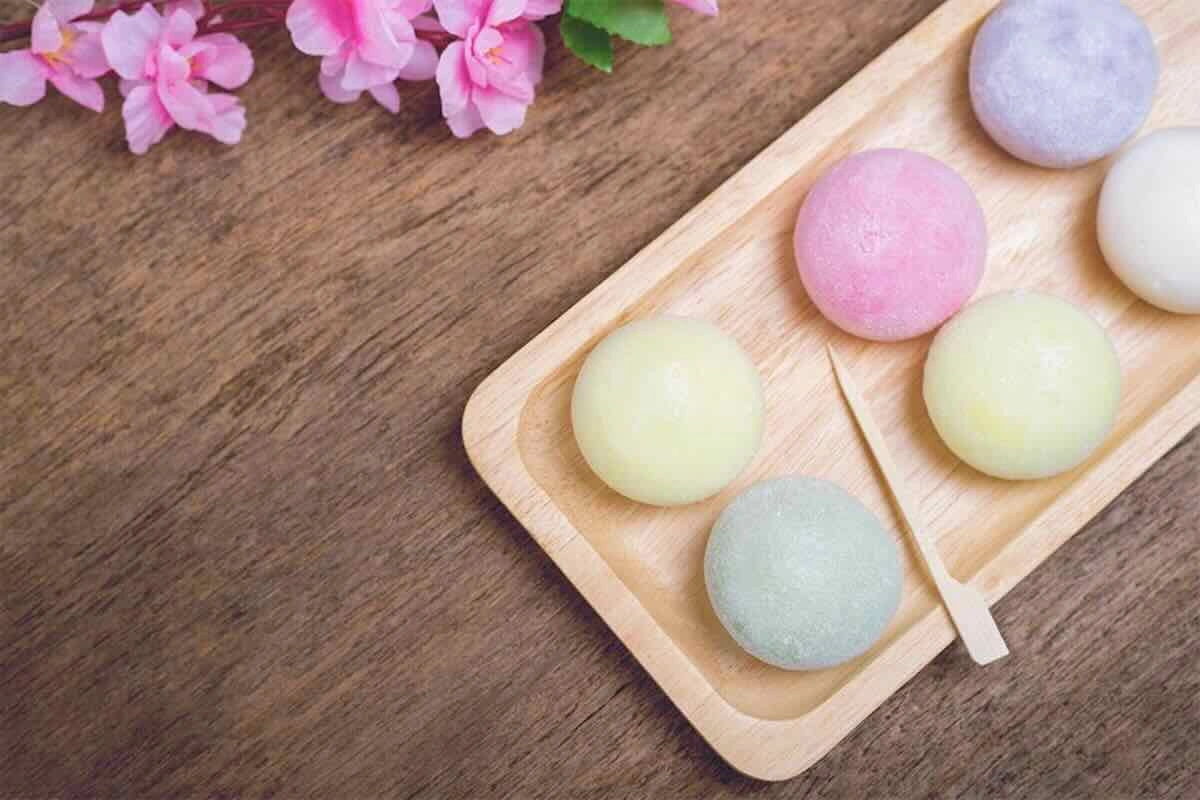
4. What to Consider When Acquiring a Mochi Daifuku Machine
Purchasing the most productive Mochi Daifuku model is not necessarily what to do, but finding one that best suits your particular production requirements.
Consider these critical questions:
1) What is your daily output?
Small businesses with distribution via cafes or customer websites directly may have only a tabletop model for 500 to 1,000 pieces/hour. Big factories with huge distribution require factory lines with thousands/hour.
2) What type of fillings will you be working with?
Smooth fillings like red bean or custard are easy enough to work with, but fillings with particulates like nuts or fruit have the requirement of having machines with a special nozzle and higher feed motors so as not to become clogged and extrude smoothly.
3) How often does your recipe or flavor change?
Sophisticated flavor transitions require quick, cleanable equipment, tool-free and modular in construction to be withdrawn back to avoid downtime and cross-contamination risks.
4) What are your limitations for power and space?
Industrial power input and larger footprints are occasionally required by some equipment. City kitchens or multi-purpose facilities may require lower-power, lower-footprint units with high performance.
For a startup or small kitchen, a tabletop machine with a capacity of 500–1,000 pieces per hour will do just fine. They are simple to upkeep, consume less power, and can grow with you when you expand.
5) Don’t forget to inquire from your supplier
- Custom mold services: Custom molds distinguish your Daifuku through the use of unique shapes or sizes and your company name or holiday colors.
- Special fruit pieces or filling nozzles: Special nozzles allow chunky or lumpy fillings to flow through without blockage or damage to the product.
- After-sales support and training: Strong manufacturers offer extensive operator training, regular maintenance programs, and easy access to spare parts to minimize downtime and maintain uninterrupted production.
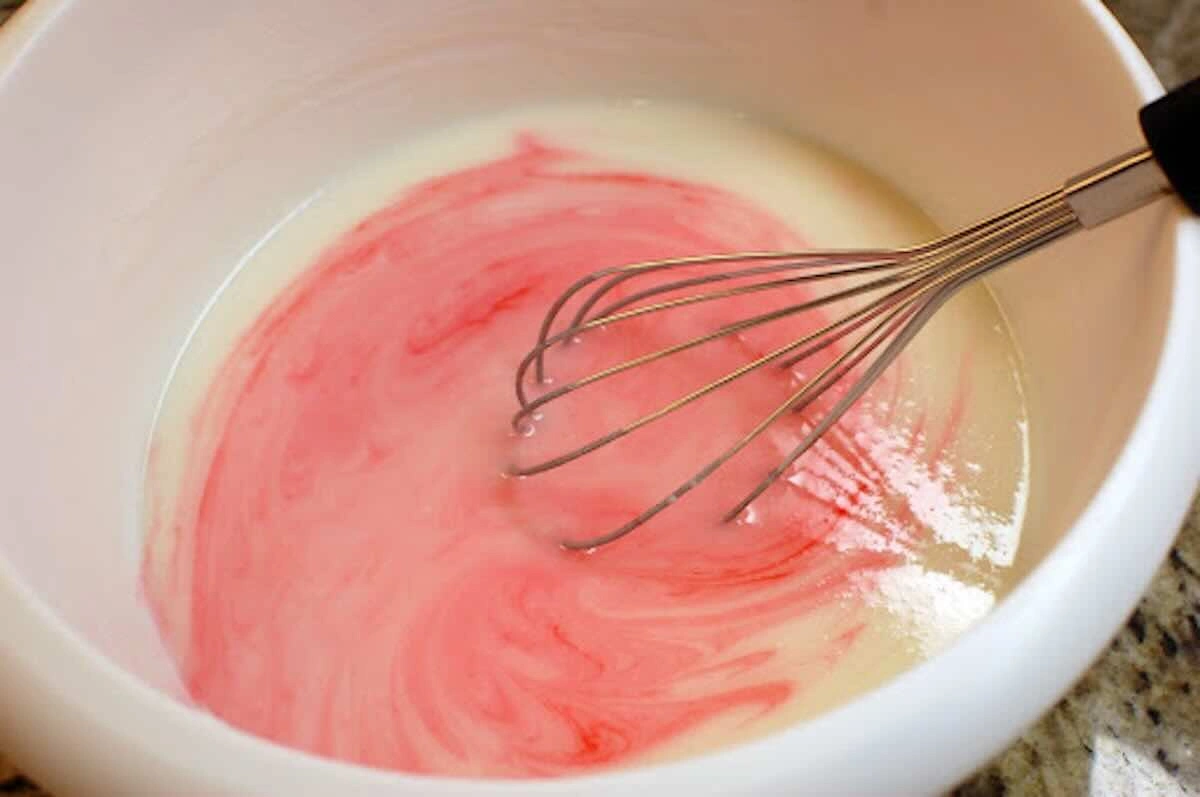
5. Pre-Automating Your Daifuku Production FAQs
If you’re a beginner at mochi automation, you must have some questions. Some of the most frequently asked among them have the following answers:
1) May I use Daifuku equipment to produce mochi ice cream as well as Daifuku?
Not usually. Mochi ice cream production involves using special cooling machinery and high-speed filling of frozen centers that are not designed for Daifuku equipment.
2) What do I do if my filling is soft or liquid?
Seek out machines with precise flow-control injectors and soft pressing components to hold their shape and not leak.
3) Is operator training complicated?
Generally not. Most of the new equipment sold these days is easy to operate using a touchscreen and recipe programs built into the machine, and new operators can be trained in a day or two.
4) How much maintenance does the machine need?
Cleaning varies with the amount of production and type of ingredients. For tacky or variable fillings, the machine is generally cleaned daily. Most designs use tool-free disassembly to make it easier.
6. Conclusion
Mochi Daifuku machines are a compromise between producing it in-house and large-scale production. Small or large producers can enjoy the much-preferred texture and flavor of home-made mochi, but make quantities to address growing market demand. With the right machine size for your production volume level, filling operation, and setup configuration, you can create new frontiers of expansion and innovation for the fast-growing mochi dessert business.

